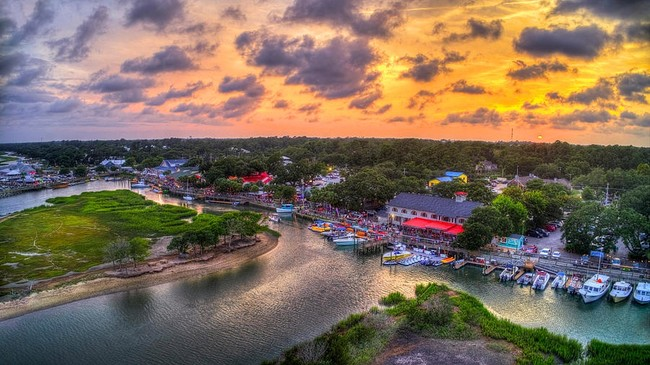A Brief History of Murrells Inlet, South Carolina

Nestled along the coast of the Grand Strand, Murrells Inlet, South Carolina, is a charming town known for its rich history, natural beauty, and coastal lifestyle. The inlet has played a vital role in the development of the region, and its historical significance continues to captivate residents and visitors alike. Let’s take a look at some of the key moments in the history of this beloved town.
Early Inhabitants and Native American Roots
Before European settlers arrived, the land surrounding Murrells Inlet was inhabited by Native American tribes. The Waccamaw people were the primary group in the area, and they lived off the land and water, relying on fishing, hunting, and gathering. Evidence of their presence has been discovered through archeological sites, including shell middens and pottery fragments, showcasing their long connection to the region.
European Settlement and the Murrell Family
In the early 1700s, European settlers began making their way to the area. The inlet was originally known as “Waccamaw,” a name derived from the local Native American tribe. The area was largely untouched for several decades, but by the mid-1700s, it began to see more development.
The inlet is named after one of its early settlers, a man named Thomas Murrell. Murrell, an early English settler, was a pirate and landowner who is believed to have used the inlet as a hiding place for stolen goods during the early 1800s. He and his family helped establish the area, and over time, the inlet came to be known as Murrells Inlet in his honor. The town’s connection to piracy and the murky waters of the inlet gave rise to local folklore and tales of hidden treasure, adding a sense of mystery to the area.
Fishing and the Development of the Commercial Industry
As the 19th century progressed, Murrells Inlet became a hub for commercial fishing. The rich waters of the inlet were teeming with seafood, and the town’s economy began to revolve around the fishing industry. Shrimp boats, oyster harvesting, and fish markets all became key elements of daily life in the area. By the late 1800s and early 1900s, Murrells Inlet was known as the “Seafood Capital of South Carolina.”
Many of the seafood traditions that still flourish today, such as shrimping and crabbing, have their roots in the town’s early commercial fishing ventures. Visitors to Murrells Inlet can still experience this legacy, with fresh seafood served at local restaurants and marinas, including Crazy Sister Marina, which plays a part in the town’s thriving fishing industry.
Murrells Inlet’s Growth and Preservation
Over the years, Murrells Inlet evolved from a small, quiet fishing village to a popular tourist destination. The town grew as visitors sought to enjoy the pristine coastal environment, the charm of its historic homes, and the laid-back atmosphere that makes Murrells Inlet so special. One of the town’s most notable attractions is Huntington Beach State Park, home to Atalaya Castle, a National Historic Landmark, and a testament to the area’s deep historical roots.
Despite its growth, Murrells Inlet has managed to maintain its historic charm. The town is known for its scenic marshes, picturesque waterfront, and vibrant local culture. Residents and visitors alike take pride in preserving the town’s natural beauty and rich heritage.
Today and Beyond
Today, Murrells Inlet continues to be a thriving community and a prime destination for those who enjoy the outdoor lifestyle. Whether you’re interested in fishing, exploring historic landmarks like Atalaya Castle, or simply relaxing by the water, Murrells Inlet offers a mix of history, culture, and recreation.
From its early Native American inhabitants to its days as a hub for piracy and commercial fishing, Murrells Inlet has always been a place that blends history with a vibrant coastal culture. As the town continues to grow and change, its historical significance remains at the heart of the community, ensuring that future generations will continue to appreciate the stories that have shaped this special corner of South Carolina.
If you’re interested in learning more about the area’s history or looking to experience it firsthand, a visit to Murrells Inlet promises a fascinating glimpse into South Carolina’s past. Whether it’s exploring its historical landmarks or sampling some of the freshest seafood along the coast, Murrells Inlet never fails to leave an impression.
